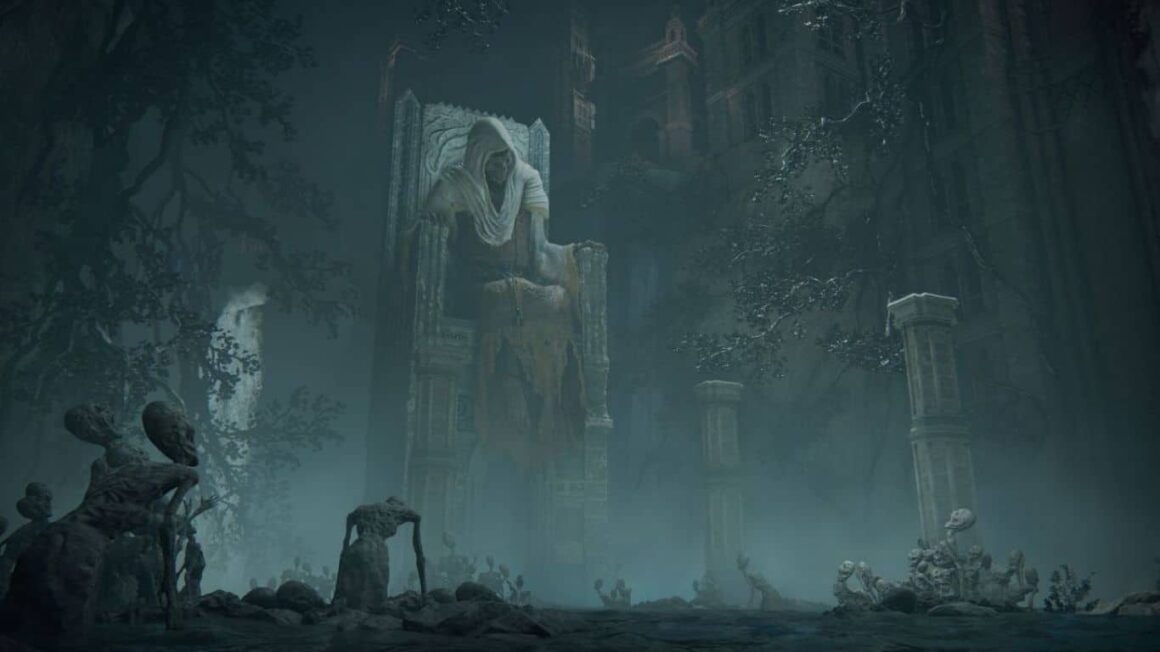Anyone who knows even a little about Norse mythology is aware of the existence of the nine realms. Within these realms, there is a realm called Helheim, which is shrouded in mystery and myth. Helheim, ruled by the enigmatic goddess Hel, serves as the realm of the dead in Norse cosmology. In this article, we will be exploring its origins, descriptions, mythological context, inhabitants, and cultural significance. By unraveling the secrets of this realm, we gain a deeper understanding of the Norse concept of the afterlife and the complex tapestry of beliefs that shaped their worldview.
Origins and Description of Helheim
Helheim, the realm of the dead in Norse mythology, has its origins rooted in the complex genealogy of the Norse deities. At the center of the realm stands its ruler, the goddess Hel. Hel is the daughter of the trickster god Loki and the giantess Angrboða, making her a being of both divine and monstrous heritage.
Hel, with her half-living and half-dead appearance, embodies the duality and ambiguity of her realm. As the goddess of the underworld, she oversees the fate of the deceased and presides over Helheim with an enigmatic nature. Hel is often depicted as a stern and somber figure, reflecting the solemnity of the afterlife she governs.
Located beneath the roots of the world tree Yggdrasil, Helheim occupies a distinct position in the Norse cosmology. It is situated in Niflheim, a primordial realm of ice and cold, separated from the other realms by impassable rivers and treacherous landscapes. Helheim is characterized by its perpetually dark and gloomy atmosphere, where chilling mists and eerie silence pervade.
The landscapes of Helheim are described as desolate and barren, devoid of vibrant life. Its realm is marked by vast stretches of icy plains, jagged mountains, and foreboding forests. It is further adorned with caverns and tombs, serving as resting places for the deceased souls who dwell there.
Within Helheim, there are various domains and sections that accommodate the souls of the departed, each reflecting the nature of their lives and deaths. These realms range from serene and peaceful abodes for honorable warriors to harsh and tormenting realms for those who committed wicked deeds.

Mythological Context and Significance
The journey to Helheim is not a straightforward path but rather a treacherous one. The deceased must navigate the perilous terrains, cross the tumultuous rivers Gjöll and Hrafnagandr, and overcome obstacles along the way. This journey is believed to test the worthiness and character of the departed souls, determining their fate in the afterlife.
The role of Helheim in the afterlife differs depending on an individual’s actions and reputation during their life. Honorable warriors who died in battle with bravery and valor are rewarded with a place in Valhalla, a majestic realm within Asgard. However, those who didn’t die in battle or didn’t meet the criteria for Valhalla find themselves in Helheim. For them, this realm becomes their final destination, where they experience a more subdued existence.
Beneath the watchful gaze of Hel, the souls in Helheim lead a relatively somber existence. They reside in a realm marked by shades of gray, away from the vibrant realms of the living and the divine. This place is seen as a place of rest and contemplation, where the souls are neither punished nor rewarded but rather exist in a state of inertia.
Helheim also plays a role in the moral and ethical framework of Norse mythology. The prospect serves as an incentive for individuals to lead honorable lives, as a dishonorable or wicked existence may result in an undesirable afterlife. The mythology emphasizes the importance of virtuous actions and upholding one’s honor to secure a more favorable destiny in the realms beyond.
Inhabitants
In Helheim, the realm of the dead, various beings populate its desolate landscapes and contribute to the overall atmosphere of the underworld.
Departed souls find their final resting place in Helheim, where they experience different conditions and fates based on their actions in life and the circumstances of their deaths.
- Home to various types of souls, including:
- Honorable but non-warrior individuals: Those who led virtuous lives but did not die in battle find solace in Helheim. They reside in peaceful and serene sections of the realm, enjoying a more subdued existence compared to those in Valhalla.
- Dishonorable or wicked individuals: Souls who committed heinous deeds or led dishonorable lives may find themselves in more tormenting realms within Helheim. These sections are characterized by punishment, suffering, or confinement, reflecting the consequences of their actions.
- The conditions and experiences of souls in Helheim are diverse:
- Peaceful existence: Honorable souls in Helheim experience a tranquil and reflective existence, free from punishment or suffering. They find solace in the quietude and contemplation of the underworld.
- Subdued existence: The souls in Helheim exist in a state of inertia, devoid of the vibrant energy found in the realms of the living and the divine. They are removed from the ongoing affairs of the living world and the grand battles of the gods.
Aside from the departed souls, Helheim is also home to other notable inhabitants:
- Monstrous creatures: Within the realm of Helheim, various monstrous beings roam the desolate landscapes. These creatures often embody the fearsome and chaotic aspects of the underworld. They may include fearsome giants, nightmarish beasts, or creatures borne out of darkness and despair.
- Hel’s retinue: Hel, the ruler of Helheim, is accompanied by a retinue of beings who assist her in governing the realm. These beings include servants, attendants, and guardians who fulfill specific roles and responsibilities within is realm. They help maintain order, oversee the souls, and ensure the proper functioning of the underworld.

Myths and Stories Associated with Helheim
One of the most prominent myths involving Helheim revolves around the journey of the beloved god Baldr. Baldr, known for his beauty, goodness, and invulnerability, was slain by Loki’s trickery. Grieving over his death, the gods sent the mighty god Hermodr to negotiate with Hel, seeking Baldr’s release from the underworld.
Hermodr embarked on a perilous journey to Helheim, traversing the treacherous paths and crossing the rivers of the underworld. Upon reaching, he encountered the stoic and enigmatic Hel, who agreed to release Baldr on one condition: all beings in the cosmos must weep for Baldr’s return. While many mourned, the giantess Thokk (believed to be Loki in disguise) refused to shed a tear, ensuring Baldr’s continued presence in the realm of the dead.
In addition to the story of Baldr, various other legends and tales feature Helheim as a significant setting:
- Heroes or gods visiting Helheim: In Norse mythology, there are accounts of brave heroes and gods venturing into Helheim to retrieve knowledge or rescue loved ones. For example, the hero Heracles (known as Herakles in Greek mythology) visited this realm to capture the fierce hound Cerberus as one of his labors. The god Odin himself also descended into Helheim to consult the seeress Volva and gain insight into the future.
- Moral lessons and symbolic elements: The tales associated with Helheim often carry moral lessons and symbolic elements. They explore themes such as the inevitability of death, the consequences of actions in life, and the fleeting nature of existence.
Also Read: Cosmic Dance of Lord Shiva: Tandava



